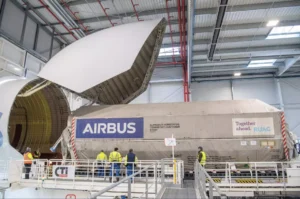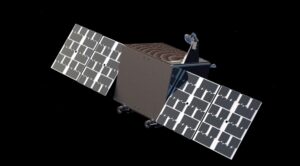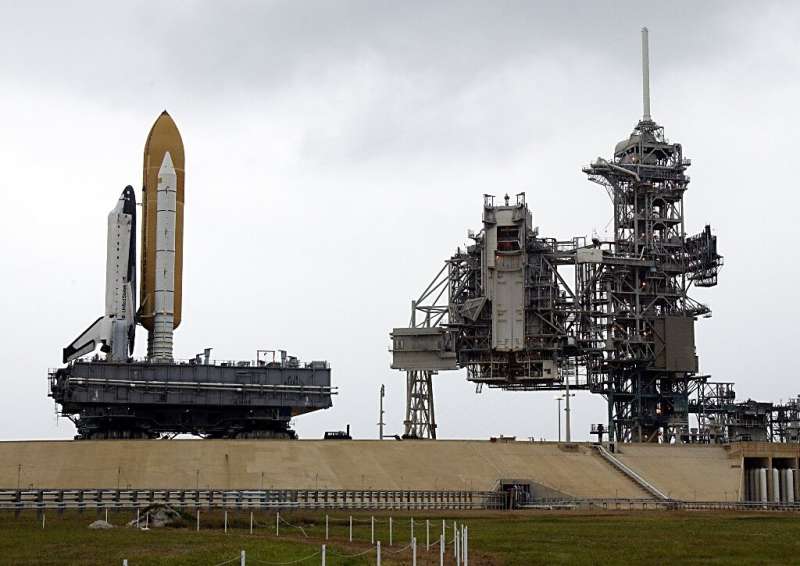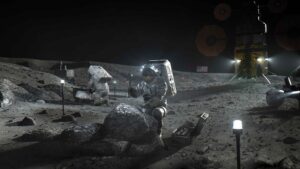Small Satellites Forum back again in Spain in its fourth edition next February
Tuesday, 31 January 2023 00:51 The aerospace sector at an international level will meet again in Spain with the celebration of the international forum "Small Satellites and Services International Forum" (SSSIF), which will take place in Malaga from February 21 to 23. The meeting, which this year will celebrate its fourth edition, will serve to analyze the main technical characteristics of current small satellites, the challen
The aerospace sector at an international level will meet again in Spain with the celebration of the international forum "Small Satellites and Services International Forum" (SSSIF), which will take place in Malaga from February 21 to 23. The meeting, which this year will celebrate its fourth edition, will serve to analyze the main technical characteristics of current small satellites, the challen Ovzon receives first SATCOM-as-a-Service order from Spain
Tuesday, 31 January 2023 00:51 Ovzon has received its first order for Ovzon's SATCOM-as-a-Service from Spanish partner Aicox Solutions.
The order is for Ovzon's SATCOM-as-a-Service Plus solution, a fully integrated solution that includes satellite bandwidth, Ovzon T6 mobile satellite terminals, commercial internet, gateway access, terrestrial backbone connectivity, and 24/7 customer service and support. The order is for
Ovzon has received its first order for Ovzon's SATCOM-as-a-Service from Spanish partner Aicox Solutions.
The order is for Ovzon's SATCOM-as-a-Service Plus solution, a fully integrated solution that includes satellite bandwidth, Ovzon T6 mobile satellite terminals, commercial internet, gateway access, terrestrial backbone connectivity, and 24/7 customer service and support. The order is for In-Space Missions announces Asia-Pacific rideshare mission
Tuesday, 31 January 2023 00:51 In-Space Missions Ltd is partnering with Singapore Space Technologies Ltd (SSTL) to initiate Faraday Dragon, an Asia-Pacific regional satellite rideshare mission targeted for launch in 2025.
Faraday Dragon will fly multiple payloads for regional space players including government, commercial, financial, research and educational organisations.
In-Space M
In-Space Missions Ltd is partnering with Singapore Space Technologies Ltd (SSTL) to initiate Faraday Dragon, an Asia-Pacific regional satellite rideshare mission targeted for launch in 2025.
Faraday Dragon will fly multiple payloads for regional space players including government, commercial, financial, research and educational organisations.
In-Space M Inmarsat-6 F2 satellite arrives on board an Airbus Beluga in Florida for launch
Tuesday, 31 January 2023 00:51 The second Airbus-built Inmarsat-6 geostationary telecommunications satellite (I-6 F2) has arrived on board an Airbus Beluga at the Kennedy Space Center in Florida ready for its launch in February.
The second satellite of the Inmarsat-6 generation is based on Airbus' ultra-reliable Eurostar E3000 spacecraft and will be the 58th Eurostar E3000 built by Airbus. It will be the ninth Eurostar
The second Airbus-built Inmarsat-6 geostationary telecommunications satellite (I-6 F2) has arrived on board an Airbus Beluga at the Kennedy Space Center in Florida ready for its launch in February.
The second satellite of the Inmarsat-6 generation is based on Airbus' ultra-reliable Eurostar E3000 spacecraft and will be the 58th Eurostar E3000 built by Airbus. It will be the ninth Eurostar Lockheed Martin team up with DARPA and AFRL for hypersonics
Tuesday, 31 January 2023 00:51 The Defense Advanced Research Projects Agency (DARPA), Air Force Research Lab (AFRL), Lockheed Martin (NYSE: LMT) and Aerojet Rocketdyne (NYSE: AJRD) team accomplished their primary objectives during its second Hypersonic Air-breathing Weapon Concept (HAWC) flight test doubling the amount of scramjet powered vehicle data.
Launching from a B-52, the HAWC system's first stage boosted it to t
The Defense Advanced Research Projects Agency (DARPA), Air Force Research Lab (AFRL), Lockheed Martin (NYSE: LMT) and Aerojet Rocketdyne (NYSE: AJRD) team accomplished their primary objectives during its second Hypersonic Air-breathing Weapon Concept (HAWC) flight test doubling the amount of scramjet powered vehicle data.
Launching from a B-52, the HAWC system's first stage boosted it to t AI joins search for ET
Tuesday, 31 January 2023 00:51 Breakthrough Listen has reported the results from a new method of searching data driven by artificial intelligence. In a paper published in the journal Nature Astronomy, the team analyze 480 hours of data from the Green Bank Telescope (GBT) in West Virginia, and report eight previously undetected signals of interest that have certain characteristics expected of genuine technosignatures.
Th
Breakthrough Listen has reported the results from a new method of searching data driven by artificial intelligence. In a paper published in the journal Nature Astronomy, the team analyze 480 hours of data from the Green Bank Telescope (GBT) in West Virginia, and report eight previously undetected signals of interest that have certain characteristics expected of genuine technosignatures.
Th AAC Clyde Space to be part of first ESA situational awareness GEO Satellite program
Tuesday, 31 January 2023 00:51 A consortium including AAC Clyde Space's subsidiary AAC Hyperion has been selected by European Defence Fund to develop a less than 100 kg satellite to be placed in geostationary orbit (GEO) for space situational awareness. The satellite, named Naucrates, is not to be trackable from ground radar, optical telescope or radio telescope. It is set to be the first European GEO satellite for Space Situ
A consortium including AAC Clyde Space's subsidiary AAC Hyperion has been selected by European Defence Fund to develop a less than 100 kg satellite to be placed in geostationary orbit (GEO) for space situational awareness. The satellite, named Naucrates, is not to be trackable from ground radar, optical telescope or radio telescope. It is set to be the first European GEO satellite for Space Situ China's Deep Space Exploration Lab eyes top global talents
Tuesday, 31 January 2023 00:51 China's Deep Space Exploration Lab (DSEL) said Monday that it is inviting top global talents to apply for the 2023 Overseas Outstanding Young Talents Program, to promote the development of deep-space exploration.
According to the DSEL, the program, funded by the National Natural Science Foundation of China, aims to attract outstanding young scholars from overseas, who have made achievement
China's Deep Space Exploration Lab (DSEL) said Monday that it is inviting top global talents to apply for the 2023 Overseas Outstanding Young Talents Program, to promote the development of deep-space exploration.
According to the DSEL, the program, funded by the National Natural Science Foundation of China, aims to attract outstanding young scholars from overseas, who have made achievement Advanced XCAM X-ray camera system ready for sub-orbital space launch
Tuesday, 31 January 2023 00:51 UK based XCAM Ltd, leaders in specialist digital camera systems, has delivered an advanced digital camera to Pennsylvania State University (PSU) in the USA, as part of a multi-million-dollar NASA space technology project that will see the system launched into space on a sub-orbital sounding rocket as part of the OGRE mission in 2025.
The Off-Plane Grating Rocket Experiment (OGRE) aims to i
UK based XCAM Ltd, leaders in specialist digital camera systems, has delivered an advanced digital camera to Pennsylvania State University (PSU) in the USA, as part of a multi-million-dollar NASA space technology project that will see the system launched into space on a sub-orbital sounding rocket as part of the OGRE mission in 2025.
The Off-Plane Grating Rocket Experiment (OGRE) aims to i Inmarsat-6 F2 satellite completes three-day trip to SpaceX launch site
Monday, 30 January 2023 20:30
Inmarsat’s latest geostationary telecoms satellite has arrived at its Florida launch site after a three-day journey from Airbus’ testing facilities in France.
The post Inmarsat-6 F2 satellite completes three-day trip to SpaceX launch site appeared first on SpaceNews.
Asteroid mining startup AstroForge to launch first missions this year
Monday, 30 January 2023 11:46
A startup with plans to mine asteroids for metals says it will launch its first two missions this year, including one that will fly by a near Earth asteroid.
The post Asteroid mining startup AstroForge to launch first missions this year appeared first on SpaceNews.
Columbia disaster that scuttled the space shuttle
Monday, 30 January 2023 08:21
America may now be aiming to put astronauts back on the Moon, but for years the United States turned its back on manned missions after the Columbia space shuttle disaster.
Its space program suffered a catastrophic setback when all seven astronauts were killed when the shuttle broke up on re-entering the Earth's atmosphere 20 years ago on February 1, 2003.
It was the second shuttle disaster after the Challenger explosion of 1986 which also killed the crew and led to sharp criticism of the safety culture at NASA.
The shuttle fleet was grounded for two and a half years and it sparked a major shift in American space flights.
NASA meeting works to define exploration architecture
Sunday, 29 January 2023 23:38
NASA officials met last week to review its overall exploration architecture, although it was unclear exactly what they agreed to and when they will make it public.
The post NASA meeting works to define exploration architecture appeared first on SpaceNews.
Dust bedevils Perseverance with damaging winds
Sunday, 29 January 2023 07:59 Scientists working on the Perseverance Mars 2020 rover mission have uncovered new insights about dust devils on the Red Planet, thanks to the meteorological sensors on the Mars Environmental Dynamics Analyzer (MEDA) instrument. The mission, which landed in Jezero crater in February 2020, has observed a high abundance of dust devils, with small seasonal variability.
According to the researc
Scientists working on the Perseverance Mars 2020 rover mission have uncovered new insights about dust devils on the Red Planet, thanks to the meteorological sensors on the Mars Environmental Dynamics Analyzer (MEDA) instrument. The mission, which landed in Jezero crater in February 2020, has observed a high abundance of dust devils, with small seasonal variability.
According to the researc GIT becomes Iridium Certus Service Provider to DoD and other Government customers
Sunday, 29 January 2023 01:28 GIT Satellite Communications (GIT) announced has become an Iridium Certus service provider and will support U.S. government customers with hardware platforms, airtime, and data services.
A long-time Iridium government service provider for narrowband voice and data services, GIT has now expanded its offering with Iridium Certus global satellite L-band broadband and midband connectivity. In
GIT Satellite Communications (GIT) announced has become an Iridium Certus service provider and will support U.S. government customers with hardware platforms, airtime, and data services.
A long-time Iridium government service provider for narrowband voice and data services, GIT has now expanded its offering with Iridium Certus global satellite L-band broadband and midband connectivity. In 
